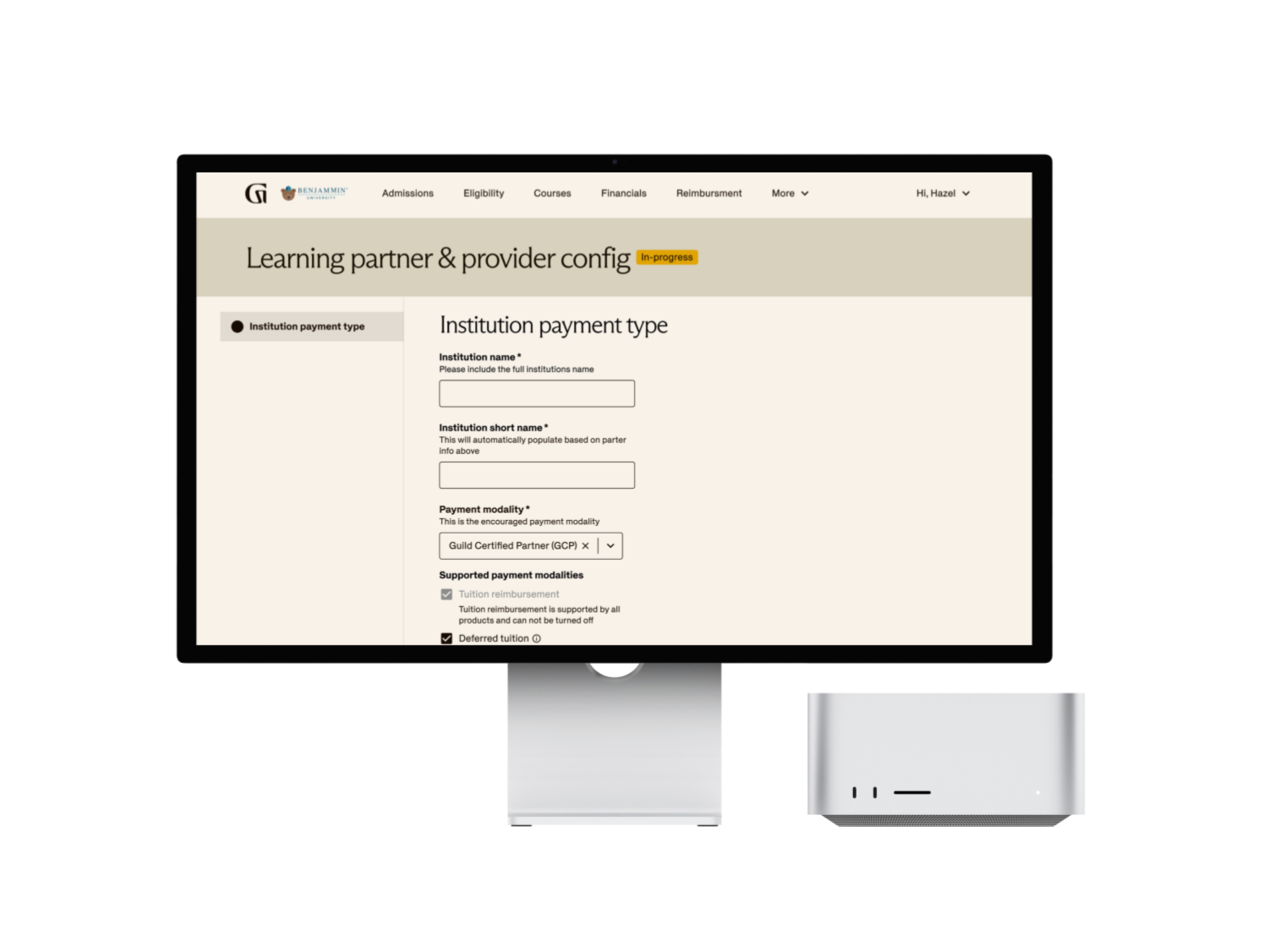Academic Partner
Configuration
Empowering teams and reducing engineering load
Background
At Guild, the operations team was consistently blocked from completing their work efficiently. Every time a new academic partner needed to be onboarded, they were stuck in a frustrating waiting game and depended on engineers to handle configurations. Roll Call, our partner portal, allowed operations to input only basic details like name, type, and logo, while the rest had to be configured manually by the engineering team. The result? Delays, frustration, and engineers stuck doing repetitive tasks instead of focusing on new projects.
Problem
It quickly became clear that this wasn’t sustainable. Multiple times a month, engineers were pulled away from crucial work to assist with manual configurations, leaving operations teams waiting and unable to act independently. The challenge was clear: create a solution that allowed the operations team to fully configure academic partners without relying on engineering.
The team
This problem was tasked to my Roll Call squad, which consisted of:
Product Manager
Front-end Engineers
Product Designer (me)
User Flow Developement
The solution needed to feel natural and fit seamlessly into the team’s workflow. So, using Guild’s design standards, I looked to create a user flow that simplified data access and entry steps.
The goal was simple: create a process that let the team work quickly and confidently.
Hi-Fidelity Design Preparation
Once the flow was solidified, I moved from wireframes to high-fidelity designs. Given that Guild was undergoing brand updates, I prepared designs in both the old and new styles. Though this added extra work, it ensured the designs were ready for implementation whenever engineering could begin work. The dual designs allowed flexibility, minimizing future delays by accommodating changes in branding.
Impact
The results were immediate and impactful. What once required engineering intervention multiple times a month was now reduced to once a quarter. Engineers were freed up to focus on more critical tasks, and the operations team could independently create partner profiles in minutes. What had been a source of bottlenecks and frustration was now a smooth, efficient process, giving both teams the freedom to focus on higher-priority work.
This work is property of Guild submitted with approval by Guild as an example of work I contributed to while employed by Guild.

